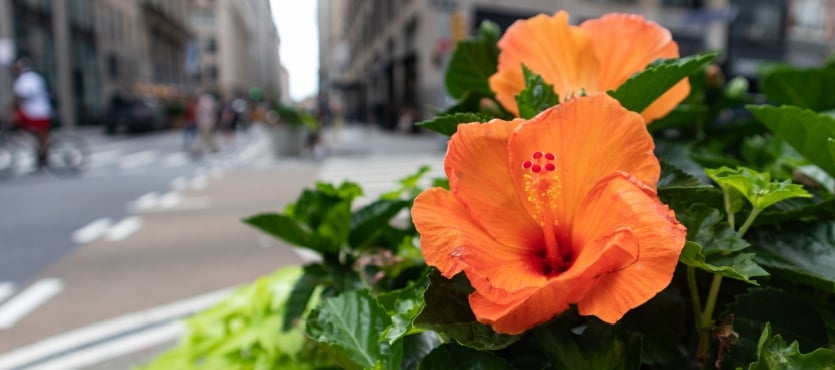In cities across the United States, the sight of garden beds and large planters strategically placed on sidewalks has become increasingly common. Businesses and local governments have adopted these methods as a way to manage public spaces, particularly in areas where homeless encampments have been prevalent. The use of planters in this manner is part of a broader effort to balance the needs of urban development, public safety, and the aesthetic appeal of city environments.
The Strategy Behind Planters
The primary function of these planters is to create physical barriers that prevent the establishment of tents and encampments on sidewalks. By placing large planters in areas that might otherwise be used as temporary shelter sites, businesses and municipalities aim to keep these spaces accessible to pedestrians and free from obstructions. This strategy is seen as a way to maintain the flow of foot traffic, enhance the visual appeal of storefronts, and ensure that public spaces are used as intended.
Planters have been used in various cities, including San Francisco, Los Angeles, and New York, where homeless encampments have posed challenges for local businesses and residents. For example, in San Francisco’s Mission District, businesses have installed over 2,000 planters to discourage encampments, an effort that has sparked significant discussion and debate.
The Broader Context of Urban Homelessness
While the use of planters as deterrents may provide a short-term solution for businesses, it is crucial to recognize that this approach does not address the root causes of homelessness. Homelessness is a complex issue, often driven by factors such as the lack of affordable housing, mental health challenges, substance abuse, and unemployment. The installation of planters might prevent encampments in certain areas, but it does not offer a solution to these underlying problems.
Urban planners and social advocates emphasize the importance of comprehensive strategies that go beyond physical deterrents. Effective solutions to homelessness require coordinated efforts between government agencies, non-profit organizations, and community groups. These efforts should focus on providing affordable housing, access to mental health services, job training programs, and other forms of social support that can help individuals transition out of homelessness.
The Role of Government and Community Organizations
Local governments play a critical role in shaping the policies and practices that influence how public spaces are managed. In many cases, municipalities must balance the interests of businesses with the needs of the homeless population. This balancing act can be challenging, especially in densely populated urban areas where public space is limited.
Community organizations also play an essential role in this dynamic. Non-profit groups and advocacy organizations often work to protect the rights of homeless individuals, ensuring they have access to necessary resources and are treated with dignity and respect. These organizations may offer alternative solutions to the use of planters, such as advocating for designated safe sleeping areas, increased shelter capacity, and more robust social services.
The Societal Debate
The use of planters as a deterrent raises questions about how cities manage public spaces and the treatment of homeless individuals. Critics argue that this approach prioritizes the interests of businesses over the needs of vulnerable populations. By creating barriers that prevent homeless individuals from using certain areas, cities may inadvertently push these individuals into more dangerous or less visible locations, further marginalizing them from society.
On the other hand, supporters of the strategy argue that businesses have a right to maintain safe and accessible environments for their customers and employees. They contend that while the use of planters is not a perfect solution, it is a necessary measure to address the immediate concerns of public safety and urban cleanliness.
An Ongoing Challenge
The trend of using planters as a deterrent to homeless encampments reflects the broader challenges that cities face in managing public spaces. While this approach may provide some relief to businesses and improve the aesthetics of urban environments, it does not offer a long-term solution to the issue of homelessness. Addressing the root causes of homelessness requires comprehensive strategies that involve government action, community support, and a commitment to social justice.
As cities continue to evolve, so too will the strategies used to manage public spaces. The hope is that future solutions will be more inclusive, offering support to those in need while maintaining the vibrancy and safety of urban environments. For more information or to discuss urban design strategies further, feel free to contact us.

